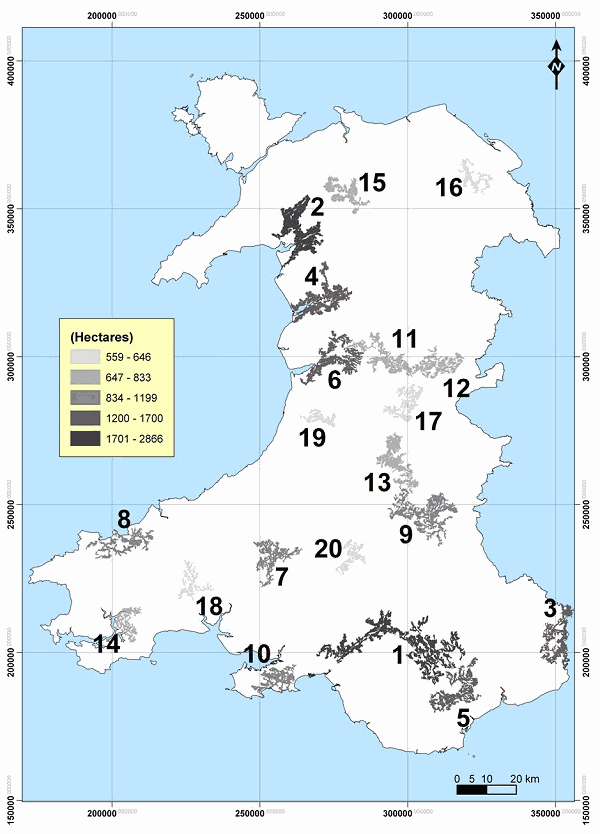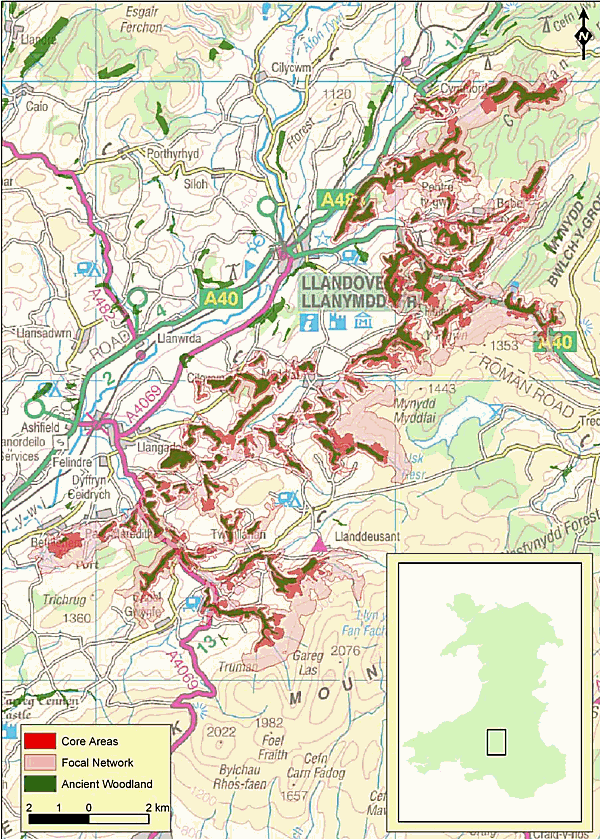Research
Research Status:completed
We use some essential cookies to make this website work.
We’d like to set additional cookies to understand how you use forestresearch.gov.uk, remember your settings and improve our services.
We also use cookies set by other sites to help us deliver content from their services.


A species-based approach was used to develop and define woodland habitat networks. A custom habitat network model was developed based on a generic focal species approach. The woodland habitat network model was based on the following structure:
The work showed the potential for applying a focal species approach to an area the size of Wales and provided new insights into how the woodlands of Wales could be potentially formed into discrete networks. This can provide useful support to landscape planning as part of the future sustainable development of Wales and aid its successful implementation.
By using more adapted native species, introducing more mixed species stands, and responding to the challenge of maintaining robust habitat networks, woodland ecosystems in Wales will be better able to cope with climate change. See adapting forests and woodlands in Wales to a future climate.
Cookies are files saved on your phone, tablet or computer when you visit a website.
We use cookies to store information about how you use the dwi.gov.uk website, such as the pages you visit.
Find out more about cookies on forestresearch.gov.uk
We use 3 types of cookie. You can choose which cookies you're happy for us to use.
These essential cookies do things like remember your progress through a form. They always need to be on.
We use Google Analytics to measure how you use the website so we can improve it based on user needs. Google Analytics sets cookies that store anonymised information about: how you got to the site the pages you visit on forestresearch.gov.uk and how long you spend on each page what you click on while you're visiting the site
Some forestresearch.gov.uk pages may contain content from other sites, like YouTube or Flickr, which may set their own cookies. These sites are sometimes called ‘third party’ services. This tells us how many people are seeing the content and whether it’s useful.